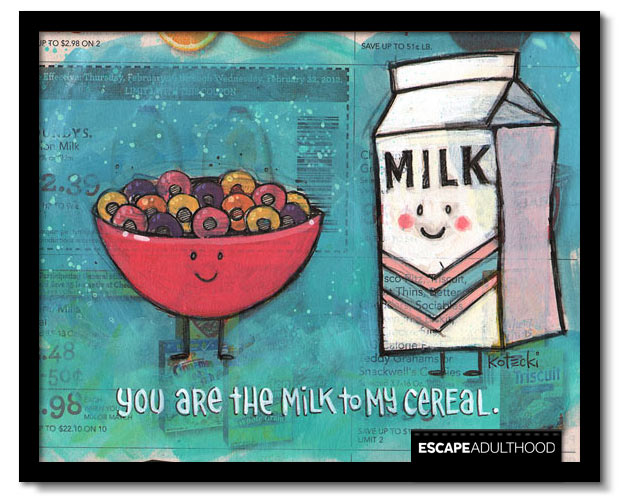
How do I eat my cereal?
The regular way.
I pour cereal into a bowl. Then I pour milk over the cereal. Then I eat the cereal, savoring the first bites before said cereal is ruined with sogginess.
My wife does it differently. She pours cereal into a bowl. Then she adds the milk. Then she goes on a two-week vacation.
Then she eats the cereal.
Somehow, we’ve been married for almost twenty-three years.
I recently learned of yet another way to approach this breakfast staple that might be even weirder. I actually met a person who pours the milk in first, before the cereal. She doesn’t drink the milk at the end (which is obviously the best part), so if she has milk left over, she keeps adding more cereal until the milk is gone.
There was a lengthy discussion about the reasoning behind this, of which I followed none of, but apparently, it was logically thought through. And get this: there were four other people in the group of about sixty that subscribed to this method.
I guess the regular way isn’t really the regular way for everyone.
I have been reminded of this as my family has been watching our way through Gordon Ramsay’s Uncharted. In this National Geographic production, the world-class chef travels the world to learn about local cuisine and compete in a cook-off against a renowned culinary expert from the region.
We’ve marveled at some of the weird things he’s sampled. We’ve seen him eat ground-up ants in India, fermented fish in Norway, stinky fruit in Malaysia, giant rodents in Louisiana, and a tarantula as a snack in the Amazon jungle. No doubt these dishes were selected for their outrageousness in the eyes of the intended audience, but the thing is, for the local resident, there was nothing outrageous about the cuisine in question.
It wasn’t weird, it was regular.
I recall a question I posed years ago to readers of my comic strip. I asked them to share the food that most reminds them of childhood. One woman shared an Indian dish I’d ever heard of, but the way she described it was exactly how I’d describe a bowl of homemade mac & cheese.
Heck, when I was a kid, sleeping over at a friend’s house always offered an education. We lived in the same small town of ten thousand, but seeing the customs, rituals, and different ways other families did things somehow felt exotic.
This is a simple but powerful reminder of the value in our differences. That diversity of ideas, experiences, and perspectives is where the magic is.
Why? In the grand scheme of things, we’re all on the same team. Best practices are good, but if we want our organizations and communities to be better—and I think we do—we need to strive to find better practices. You could define better however you’d like: healthier, safer, friendlier, more affordable, more profitable, etc. But uncovering better practices requires new ways of seeing and thinking. Ways that are invisible if everyone shares the same regular way of seeing and doing things.
I know, I know, the regular kind is safe. It’s comfortable. And here’s the tricky (and dangerous) part: because it is those things, it also feels right.
But in most cases, we’re not talking about morality. The truth is, it’s merely different.
And if you want to get someplace different (i.e. better) than you are now, a new perspective can help. If you want a better company, church, or neighborhood, figure out a way to invite more people into the mix whose idea of regular is different than yours.
Maybe you could start with people who pour the milk in first.